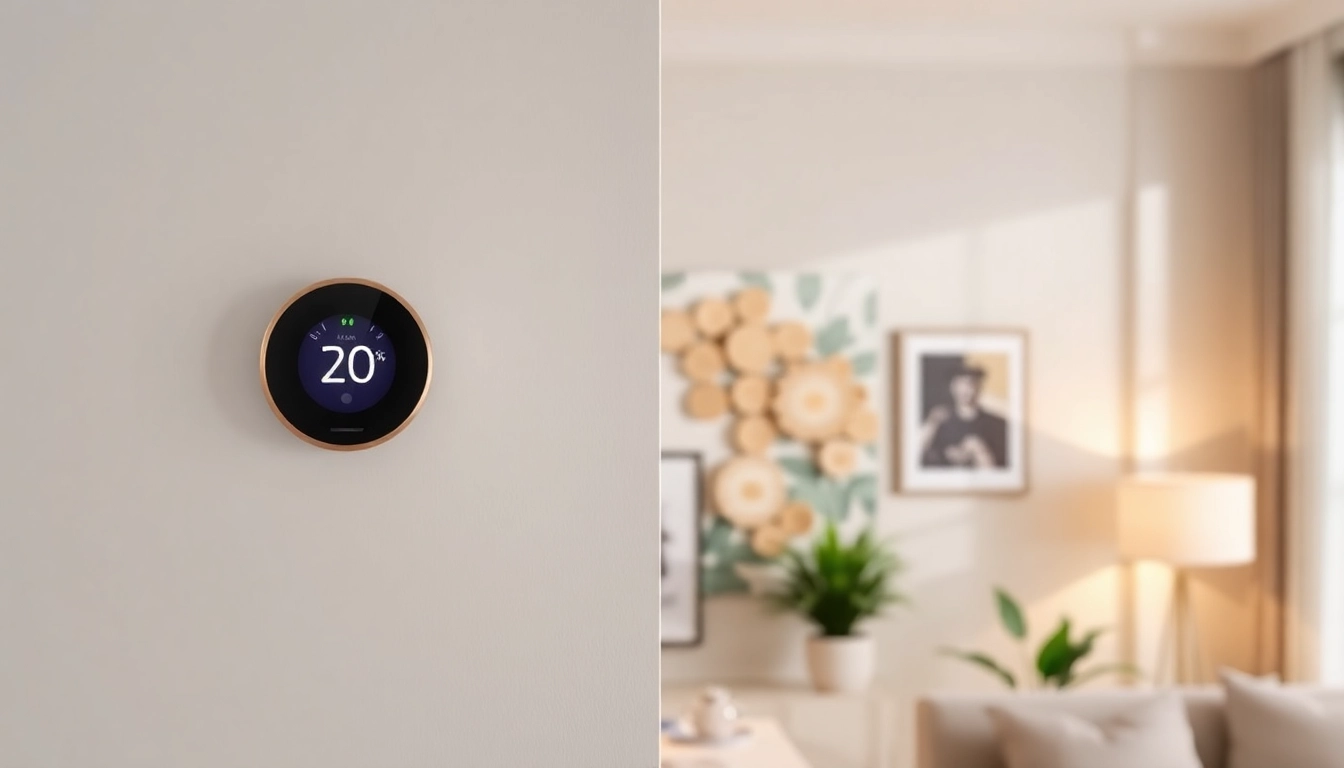As we advance deeper into the digital age, home automation is becoming increasingly prevalent. One of the significant advancements in this area is the emergence of Wi-Fi thermostats. Rated as some of the most beneficial smart home devices, the best wifi thermostat options offer a seamless integration of comfort and energy efficiency. This comprehensive guide explores everything you need to know about Wi-Fi thermostats, their benefits, top models of 2025, and how to select the best one for your home.
Understanding WiFi Thermostats
What is a WiFi Thermostat?
A Wi-Fi thermostat is a device that allows you to remotely control your home’s heating and cooling system through a wireless network. Unlike traditional thermostats, which require manual adjustments, Wi-Fi thermostats offer smart features that enable homeowners to monitor and adjust their HVAC systems using smartphones, tablets, or computers. This means you can manage the temperature of your home from virtually anywhere, providing both convenience and increased energy efficiency.
How WiFi Thermostats Work
Wi-Fi thermostats operate by connecting to your home’s Wi-Fi network. They communicate with your HVAC system and other smart home devices to learn your preferences and usage patterns. Through a dedicated mobile app or web interface, you can set schedules, adjust temperatures, and monitor energy usage in real time. Many models come equipped with advanced sensors that detect occupancy, allowing them to adjust settings automatically based on whether someone is at home.
Benefits of the Best WiFi Thermostats
Wi-Fi thermostats come with numerous advantages, making them an essential addition to any modern home:
- Remote Access: Control your thermostat from anywhere in the world using an internet connection.
- Energy Savings: Programmable settings and learning algorithms help optimize energy use, lowering utility bills.
- Integration: Many Wi-Fi thermostats are compatible with other smart home systems, enhancing overall home automation.
- User-Friendly Interfaces: Intuitive apps simplify thermostat adjustments and monitoring.
- Maintenance Alerts: Some models provide reminders for filter changes and maintenance checks, helping ensure optimal performance.
Top WiFi Thermostat Models of 2025
Ecobee Smart Thermostat Premium
The Ecobee Smart Thermostat Premium is often touted as the best overall Wi-Fi thermostat for 2025. Renowned for its comprehensive features, it includes a built-in voice assistant, air quality monitoring, and supports compatibility with Apple HomeKit, Alexa, and Google Assistant. With its innovative room sensor technology, the thermostat can optimize heating and cooling based on occupancy across different areas of your home, making it exceptionally efficient.
Google Nest Learning Thermostat
The Google Nest Learning Thermostat (4th Gen) is praised for its AI-driven capabilities. This thermostat adapts to your routines and can automatically adjust temperatures accordingly. Its sleek design and user-friendly interface make it a favorite among homeowners. The device is also compatible with various smart home systems and provides users with important energy usage reports.
Amazon Smart Thermostat
This budget-friendly option from Amazon offers essential smart features without breaking the bank. While it may lack some of the advanced functionalities found in higher-end models, the Amazon Smart Thermostat provides solid performance with an easy installation process. It seamlessly integrates with Alexa for voice control, making it a practical choice for those new to smart home technology.
Choosing the Right WiFi Thermostat for Your Home
Key Features to Consider
When selecting a Wi-Fi thermostat, consider the following features to ensure it meets your needs:
- Smart Scheduling: Look for thermostats that allow you to automate heating and cooling based on your daily routine.
- Compatibility: Ensure the thermostat works with your HVAC system and other smart home devices.
- Mobile App Functionality: Evaluate the usability and features of the thermostat’s app.
- Energy Reports: Some devices can provide insights into your energy consumption, helping identify areas for savings.
- Voice Control: Features that support voice assistants can add convenience.
Installation and Compatibility
The installation process varies depending on the thermostat and your home’s existing HVAC system. Most models come with straightforward installation guides, and many users can perform the setup themselves. If you’re uncomfortable with DIY projects, hiring a professional for installation is advisable. Compatibility is crucial; ensure the thermostat is suitable for your specific heating and cooling units to avoid compatibility issues.
Cost vs. Value Analysis
When evaluating Wi-Fi thermostats, it’s essential to weigh the cost against the potential savings. While higher-end models like the Ecobee or Google Nest come with a more significant initial investment, their advanced features can lead to more substantial energy savings over time. Budget options might save you upfront but could lack the efficiency and control that more premium models provide. Analyze your home’s needs and usage patterns to find the best balance between cost and value.
Common Challenges with WiFi Thermostats
Connectivity Issues
One common issue with Wi-Fi thermostats is connectivity problems. These can arise from weak Wi-Fi signals, especially in larger homes where the router might be far from the thermostat. To mitigate this, consider investing in Wi-Fi extenders or a mesh network to enhance coverage throughout your home. It’s essential to keep your firmware up to date to prevent connectivity glitches.
Programming Confusion
Many users initially struggle with programming their Wi-Fi thermostats due to the variety of options available. To alleviate this, some manufacturers provide comprehensive online resources, including video tutorials. Furthermore, many Wi-Fi thermostats are designed to learn your habits, minimizing the need for detailed programming in favor of automatic adjustments.
Maintenance Tips for Longevity
To ensure your Wi-Fi thermostat functions optimally for years to come, consider these maintenance tips:
- Regularly check and change air filters according to manufacturer recommendations.
- Keep the thermostat’s sensors clean and free from obstruction.
- Schedule periodic check-ups for your HVAC system to ensure everything is running smoothly.
- Update the thermostat’s software and mobile app to incorporate the latest features and security enhancements.
Enhancing Energy Efficiency with WiFi Thermostats
Smart Scheduling Techniques
Effective energy management starts with smart scheduling. Utilize your thermostat’s scheduling features to set different temperature levels for different times of the day. For instance, lower the temperature during the day when no one is home and raise it before your arrival in the evening. This practice not only enhances comfort but can also lead to significant energy savings.
Reducing Energy Costs
According to the U.S. Department of Energy, adjusting your thermostat by just a few degrees can lead to substantial savings on your energy bill. Many Wi-Fi thermostats offer alerts and tips to help you optimize your energy usage, making it easier to control costs and benefit the environment simultaneously.
Integrating with Other Smart Devices
One of the joys of having a smart home is the ability to integrate devices for streamlined operations. For example, linking your Wi-Fi thermostat with smart light bulbs can reduce energy consumption automatically when you leave a room. Furthermore, combining it with smart home assistants allows you to control everything with voice prompts, making your home even more intuitive and efficient.



